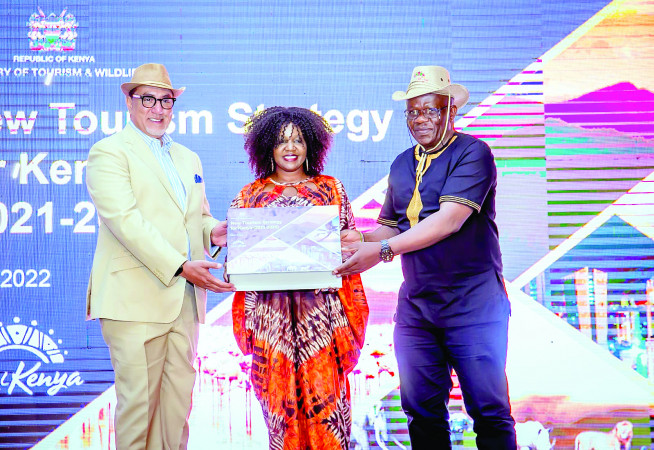State unveils plan to drive rapid recovery of tourism sector

The government has launched an ambitious five-year strategy to fast-track the recovery of the tourism sector.
Najib Balala, Tourism and Wildlife Cabinet Secretary said the recovery framework is intended to accelerate the growth of the sector to regain the upward trajectory witnessed pre-pandemic.
Before the outbreak of Covid and the ensuing global lockdown that froze tourism earnings, the industry boasted 2.04 million inbound visitors.
The sector contributed an estimated 9.3 per cent of the country’s gross domestic product (GDP) all the while providing employment to at least 1.08 million people.
Balala who spoke during the launch of the strategy in Nairobi said 2019 was the best year in the sector and the recovery model aims to recover to the 2019 levels of tourism spending by 2024. He recounted how the pandemic created an unprecedented problem for the sector.
Empty airports
“The whole world, nobody imagined, could be shut down. For three months, airports were empty, and rooms and hotels were empty. We were scared even to shake hands and to hug,” the CS recalled.
With the brunt of the pandemic ebbing away, there have been good signs of an industry in recovery and several hotels, such as Fairmont The Norfolk, Radisson Blue, have re-opened, with more re-openings still on the way.
The New Tourism Strategy for Kenya (2021-25) is the product of a wide engagement involving industry stakeholders such as tour operators, global funders, eco-tourism and conservation NGOs, parastatals and State-owned enterprises.
It has since been tabled and approved by the Cabinet and will run beyond this government and unto the next Administration. The strategy team looked at four components (Brand, Marketing, Experiences, and Enablers) backed by nine initiatives.
Existing markets
The initiatives included brand repositioning and development of new and existing markets with targetted campaigns to five high-value source international markets (US, UK, China, UAE and Saudi Arabia).
The domestic market has also been identified as a growth driver with the target being youth, high-earners, and families with specific 2-3 day events and targeted (digital) marketing offers.















